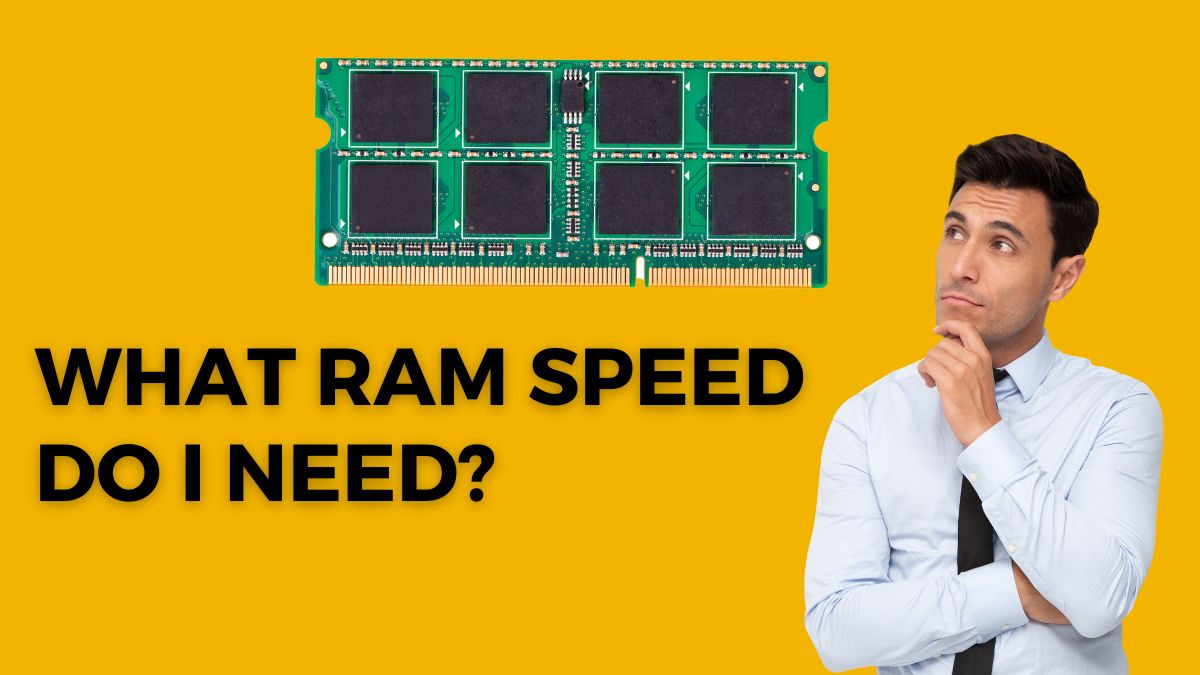Random Access Memory, commonly known as RAM, plays a crucial role in the performance of a computer system. It serves as a temporary storage space for data that the processor needs to access quickly. When it comes to RAM, one important consideration is its speed. RAM speed, also referred to as RAM frequency or clock speed, determines how quickly data can be read from or written to the RAM modules.
However, understanding the RAM speed requirements can be a bit complex, as it depends on various factors such as the computer’s intended use, processor capabilities, and budget. In this article, we will explore different aspects of RAM speed to help you determine what RAM speed you need for your specific requirements.
Understanding RAM Speed
RAM speed is measured in megahertz (MHz) and indicates the number of cycles per second that the RAM can perform. Higher RAM speeds generally imply faster data transfer rates, allowing the processor to access information more quickly.
However, it’s essential to note that RAM speed alone is not the sole determinant of a system’s overall performance. Other factors like the processor, storage devices, and software optimization also contribute to the overall speed and responsiveness of a computer.
Impact of RAM Speed on Performance
The impact of RAM speed on performance varies depending on the specific task and application. In some scenarios, such as gaming or video editing, where large amounts of data need to be processed in real time, faster RAM speeds can make a noticeable difference.
This is because the processor can access data from RAM more quickly, reducing the time it takes to load game levels, process video effects, or render complex scenes. On the other hand, for everyday tasks like web browsing, word processing, or watching videos, the impact of RAM speed on overall performance is generally minimal.
Factors Affecting RAM Speed Requirements
1Processor Limitations
The processor, or CPU, interacts with RAM to access data. Different processors have specific limitations on the RAM speed they can support. It’s crucial to check the specifications of your processor to determine the maximum RAM speed it can handle. Using RAM modules with speeds higher than the supported limit will result in the RAM running at the maximum speed supported by the processor, negating any benefits of faster RAM.
2System Requirements
The RAM speed requirements can vary based on the specific software or games you intend to run. Some resource-intensive applications may benefit from faster RAM speeds, while others may not show a significant improvement. If you have particular software or games in mind, it’s worth checking their recommended system requirements to determine if they specify any specific RAM speed.
3Budget Considerations
RAM modules with higher speeds often come at a premium price compared to slower ones. While faster RAM speeds can provide a performance boost in certain scenarios, it’s essential to consider your budget. It’s often more cost-effective to invest in other hardware components, such as a better processor or a solid-state drive (SSD), which can have a more noticeable impact on overall system performance.
4Overclocking Potential
Overclocking refers to running hardware components, including RAM, at speeds higher than their default specifications. If you have an interest in overclocking your system, you may consider purchasing RAM modules with higher speed ratings. However, overclocking carries potential risks, such as stability issues and increased power consumption, so it should be approached with caution.
Finding the Right Balance
Choosing the optimal RAM speed involves finding the right balance between your requirements, budget, and system limitations. Here are a few general guidelines:
For Basic Computing: If you primarily use your computer for everyday tasks like web browsing, word processing, and media consumption, a standard DDR4 RAM module with a speed of 2400 MHz to 3200 MHz should suffice. Higher speeds may provide minimal benefits in this scenario.
For Gaming and Multimedia: If you’re a casual gamer or engage in multimedia activities like video editing or 3D rendering, consider opting for RAM modules with speeds ranging from 3200 MHz to 3600 MHz. These speeds should provide a good balance between performance and cost.
For Enthusiast and Professional Workloads: If you’re a power user, engage in heavy multitasking, or work with professional applications that demand high-performance computing, faster RAM speeds in the range of 3600 MHz to 5000 MHz might be worth considering. However, keep in mind that the benefits may vary depending on the specific tasks and software involved.
Remember to cross-check the RAM speed compatibility with your motherboard and processor specifications before making a purchase. Additionally, consider factors like latency (measured in CAS timings) and the overall capacity of the RAM modules to ensure they meet your requirements.
Conclusion
RAM speed can influence system performance, particularly in resource-intensive tasks like gaming and content creation. However, it’s important to weigh various factors such as processor limitations, system requirements, budget, and the overall balance of your computer system. While faster RAM speeds can provide benefits in specific scenarios, they might not always justify the additional cost. It’s advisable to research the specific requirements of your intended applications and consult hardware experts or online forums for personalized recommendations based on your unique needs.
